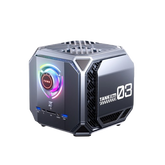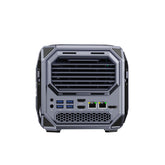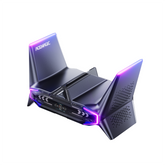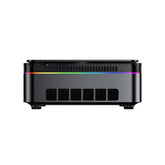What Are CPU Cores? Find Out How Many You Really Need!
 Introduction
Introduction
The number of CPU cores your computer has directly affects how many tasks your computer can handle at once. More cores generally mean better multitasking and smoother performance with newer applications.
In this article, you'll discover what CPU cores are, how they work, and how many you may actually need based on your computer usage.
Getting to Know CPU Cores
A CPU core is a physical processing component in the CPU that reads and executes instructions. Older computers had single-core CPUs, which were capable of handling only one task at a time. Now, multi-core processors can handle more than one instruction at the same time.
Every core is able to run its own task independently, which significantly enhances the performance of a system. It is particularly important for multitasking, gaming, or running software that is able to use more than one core at a time (multi-threaded software).
For example, a 4-core processor can handle four threads simultaneously. If the processor also supports simultaneous multithreading (e.g., Intel Hyper-Threading or AMD SMT), it is actually able to handle eight threads, doubling its workload potential.
Cores do not function in isolation. They also function in cooperation with other components like RAM and GPU, and their performance also depends upon clock speed, cache size, and the software being used.
Common CPU Core Counts and Their Uses
CPUs are available in a range of core configurations, from low-power dual-core processors to high-performance multi-core CPUs. What follows is a list of typical core counts and the types of workloads they're most suited for:
| Core Count | Best For |
|---|---|
| 2 Cores | Basic web browsing, emails, document editing |
| 4 Cores | Light multitasking, video streaming, casual gaming |
| 6 Cores | Mainstream gaming, photo editing, general productivity |
| 8 Cores | Heavy multitasking, video editing, game streaming |
| 10+ Cores | 3D rendering, compiling code, professional content work |
2 Cores
Dual-core processors are the minimum for most computers. They generally support up to 4 threads with simultaneous multithreading, depending on the architecture. These processors are designed for low power with a usual thermal design power (TDP) of 15W–20W. They are suitable for light workloads and are usually found in low-end laptops, tablets, or small form factor desktop systems for basic office or internet usages.
4 Cores
Quad-core processors typically process 4 to 8 threads and are the standard configuration for modern laptops and desktops. They are robust enough to manage multiple browser tabs, video playback, and general office or school workloads. TDP depends on clock rate and power envelopes ranging from 15W in ultraportables to some 65W in standard desktops.
6 Cores
A 6-core CPU can typically handle up to 12 threads and offers great performance for multi-threaded productivity apps, multitasking, and newer games. This is a common setup for mid-range gaming PCs and higher-end laptops. These processors typically sit in the 65W to 105W TDP range. There are even multi-CPU server setups that use multiple 6-core CPUs, but this is rare in consumer-grade hardware.
8 Cores
Eight-core CPUs process up to 16 threads and offer decent performance for video editors, software developers, or those who use demanding applications. The majority of consumer desktops and high-end performance laptops now use 8-core CPUs. These processors typically have a 95W to 125W power consumption and may require specialized cooling solutions. Some high-end variants offer programmable thermal profiles to support small form factor machines without throttling.
10 or More Cores
10, 12, 16, or more core CPUs are built for high-throughput computing. A 16-core processor, for example, supports 32 threads and is ideal for 3D modeling, CAD, and scientific computing. Power usage is usually higher—often over 125W—and these CPUs are most commonly used in workstations or enthusiast desktops with liquid cooling. Multi-socket server boards can support two or more of these CPUs simultaneously, offering 32, 48, or even 64 physical cores in total.

Factors to Consider When Choosing CPU Cores
Task Type
The type of tasks you do every day is the most important factor in deciding how many cores you need. Browsing the web or writing documents won't require high core counts, but video editing, rendering, and compiling code all benefit from parallel processing.
Clock Speed vs Core Count
Core count is a metric of how many things can be done at the same time, and clock speed is a metric of how fast each core can handle data. A faster clock speed on fewer cores can outperform a slower chip with more cores on single-threaded workloads like certain games.
Power Consumption and Heat
More cores typically increase power use and heat generation. This impacts laptop battery life and may require better cooling for desktops. Always check TDP and thermal requirements before purchasing.
Budget and Use Case
More cores typically mean more expense. Unless you have specific performance requirements, a mid-range CPU with 4 or 6 cores is likely your best value.
Frequently Asked Questions (FAQ)
What does a CPU core do?
Each core executes individual threads or tasks. More cores allow your system to handle more tasks at the same time.
Is more cores always better?
Not necessarily. For programs that don't use many threads (like older games or simple applications), fewer faster cores can be preferable to more slower ones.
How do cores affect gaming vs productivity?
Games today are 4 to 8 core dependent. Professional and creative applications can utilize additional cores.
Can I run modern software on less cores?
Yes, but performance will be limited. Much general software today still runs fine on 2 or 4-core systems, but multitasking will be restricted.
How do cores communicate with other components like RAM and GPU?
CPU cores process data but depend on RAM for fast data access and on the GPU for rendering images or videos. A balanced system is faster than a strong CPU alone.
Conclusion
Processor cores play a large role in the performance of your computer under different types of workload. From basic 2-core setups to ultimate multi-core workstations, the best choice is a function of your workload pattern.
Look at your typical workload and choose a core count that matches your needs for performance and budget when shopping for a new machine or upgrading your processor.
Explore ACEMAGIC's High-Performance Mini PCs
If you're looking for compact computers that offer the perfect balance of core count, power efficiency, and affordability, ACEMAGIC offers a range of mini PCs tailored to all types of users—from basic users to content creators. Whether you're performing general productivity with a 4-core CPU or need an 8-core processor for content creation, there is a system designed to fit your needs without taking up much space.







Leave a comment
Please note, comments need to be approved before they are published.